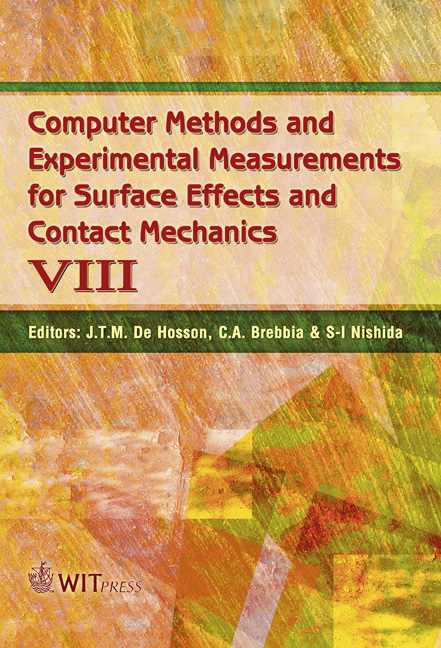Progress On Experimental And Finite Element Studies Of Oblique Elastic Impact
Price
Free (open access)
Transaction
Volume
55
Pages
10
Published
2007
Size
496 kb
Paper DOI
10.2495/SECM070161
Copyright
WIT Press
Author(s)
P. P. Garland & R. J. Rogers
Abstract
Oblique elastic impact of nonconforming bodies is a special case of stereomechanics that can occur in several engineering applications such as loose fitting joints, robotic tasks and granular assemblies. Of particular interest in this type of impact is the tangential force that develops between the colliding bodies due to friction and tangential compliance. The solution of this problem is made more difficult due to the constantly changing contact area over the duration of impact. These factors lead to highly nonlinear force-displacement relationship between the colliding bodies. Analytical/numerical methods based on contact mechanics have shown the tangential force waveform experienced when spherical bodies collide at low velocities is dependent on the angle of incidence. At large angles of incidence, full sliding of the bodies will occur. In this case, the tangential force will be equal to the limiting Coulomb friction value. At smaller angles of incidence, the bodies may have varying periods of full sliding, partial slipping or complete sticking over the duration of impact. In these cases, the tangential force can be expected to oscillate during impact. Experimental testing and finite element modeling are currently being used to verify the correctness of analytical/numerical solutions previously developed. The experimental study uses a simple pendulum with a spherical steel striker. Contact force data of the oblique impact event is collected using a single tri-axial piezoelectric force transducer. The finite element model of the impact event is coded using commercially available Abaqus/ExplicitTM software. The finite element model also allows for exploration of the various stress distributions on the contact surface of the colliding bodies. Preliminary results from both methods indicate that the tangential force will oscillate for shallow angles of incidence. However, comparisons of these methods to one another and to the available solutions show significant characteristic differences. Keywords: experimental impact, finite element analysis, contact forces, Coulomb friction, shear stress, partial-slip distribution.
Keywords
experimental impact, finite element analysis, contact forces, Coulomb friction, shear stress, partial-slip distribution.





